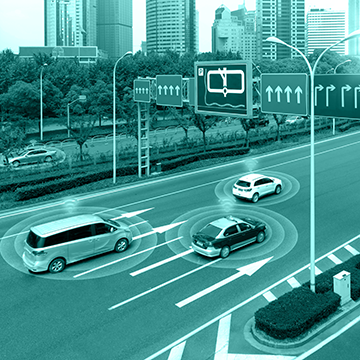Enterprise Solutions
Collaboration success through integration
Our expertise
The need for enterprise productivity is at all-time high in the race to stay competitive. Enhanced intra and inter-company collaboration plus the way we communicate with customers is evolving at a rapid rate. To meet this demand, service providers have developed game changing as-a-service business models. Unified-communications-as-a-service (UCaaS) and communications-platform-as-a-service (CPaaS) are leading the way. Incumbent players including BT and Colt alongside niche players like Televox have facilitated a huge shift in the way we work. Advanced security is necessary with a mobile workforce. Enterprise solutions must accommodate flexible working patterns and constant connectivity. As a result, companies must alter the employee experience. The focus of this change should be maintaining welfare, security, and productivity.
Enterprises must identify the right unified communications and collaboration (UCC) solution suited to their organisation and culture. Solutions must work across multiple devices. Further, it must be accessible across geographies, languages, and time zones. Integrating mobile, landline, IP, Wi-Fi, cloud infrastructure, networking solutions and applications is complex. As a result, it requires a well thought though and flexible solutions architecture.
RDC understands that enterprise solution providers must optimise across 3 layers: connectivity, networking intelligence and business applications. This becomes a challenge when articulating the proposition to businesses of varying sizes and corporate goals. We have developed winning sales enablement strategies based on depth of understanding of needs from SMEs to multinational corporations. Often, enterprise solutions are delivered by channel partners, and we build exceptional sales toolkits to support this, together with strategies to build direct sales capabilties.
Get in contact for support with:
- Enterprise solution market intelligence
- Sales channel strategy and development
- Go-to-market and proposition development for enterprise solutions
- Enterprise solution architecture
- M&A and due diligence on enterprise solutions
- Operational implementation of enterprise solutions
Enterprise solutions are evolving
VoIP and UCaaS are growing
Voice over Internet Protocol (VoIP) and mobile voice services supported by software defined networking (SND) are taking over traditional circuit-switched voice services. Unified-Communications-as-a-Service (UCaaS) alongside VoIP can integrate voice, video, messaging and more into a single platform. As a result, the consumer and businesses are considering their options regarding landlines vs more flexible and cost-effective solutions
Artificial Intelligence (AI) is inescapable
Subsections of the technology, including machine learning and generative AI are driving innovations in process automation, customer experience, decision-making, and predictive analytics. Data analytics are used to gain insights, automate tasks, and create adaptive intelligent systems. AI has become key to customer relationship management (CRM) and retention using AI driven data to improve customer outcomes
Security is top of the hierarchy
Privacy and cybersecurity are increasingly important as digital threats become more sophisticated. Data use has skyrocketed and the amount of information that companies hold on customers as well as their own assets quires protection though adopting next-generation firewalls, endpoint protection, and cybersecurity architectures in order to build a flexible, integrated security system
5G rollout has hit a critical mass
Faster speed, lower latency, more simultaneous connections. These three features mean that 5G enables new applications and services, including HD voice, network slicing for dedicated virtual networks, and higher IoT capacity
Computing technologies are revolutionary
Edge computing brings data processing closer to where data is generated instead of having to send it to a data centre or the cloud. Edge computing helps reduce latency, conserve bandwidth, and improve response times. This is hugely useful for businesses that require real-time processing and analysis of data from IoT devices. Examples include manufacturing, healthcare, and retail.
Cloud computing is an essential part of IT strategies. Cloud provides businesses with for its scalability, flexibility, and cost-efficiency. Scalability enables businesses to quickly adjust computing resource based on current needs. This avoids the need for investment into additional hardware or infrastructure. Businesses with fluctuating demand find this especially useful, such as e-commerce companies. Cloud-based solutions enable access to computing resources from anywhere. This makes remote working and collaboration easier.
Hybrid cloud environments, combining private clouds, public clouds, and on-premises resources can offer a tailored solution that meet specific security, compliance, and performance requirement
IoT enhances productivity
IoT is a vital technology across industries and sectors including agriculture, medicine, and manufacturing. By gathering and transmitting data in real time, IoT devices offer operational and customer insights to informs business decisions and improves process efficiency. Further, IoT supports task automation and optimisation e.g. inventory tracking and supply reordering, reducing the need for human monitoring and detecting issues before they arise
Blockchain is a growth vector
While blockchain has lost the buzz it had in recent years, when deployed correctly it has the potential to revolutionise areas, including:
Supply chain management: Blockchain can track and verify the movement of goods through the supply chain. This increases transparency and reduces the risk of fraud and errors
Identity verification: Blockchain can verify an individual or organisation’s identity. This is achieved by creating secure, decentralized digital identity
Smart contracts: Blockchain can automate contract and agreement execution. This reduces the need for intermediaries, and minimises the risk of errors or fraud
Healthcare: Blockchain can securely store and share medical records. It reduces the risk of errors/breaches and improves healthcare efficiency
Digital twinning for efficiency
Digital twins are a virtual representation of a physical object or system. They are used heavily in industries like manufacturing, automotive, and smart cities. A digital representation enables businesses to simulate, predict, and optimise operations and products virtually before implementing changes in the real world
XaaS models dominate
The X-as-a-Service model has grown beyond software (SaaS) now including everything from hardware (HaaS) and platform (PaaS) to entire business processes (BPaaS). This trend reflects a broader move towards service-oriented architectures, offering businesses greater flexibility and scalability
Remote/hybrid working
Working from anywhere requires secure access to company systems and resources. Enterprise solutions must provide remote access capabilities. Important technologies include virtual private networks (VPNs) and remote desktop protocols (RDP). Beyond security, session initiation protocols (SIPs) are a vital component of any enterprise solutions to enable real time collaboration and communication. SIP can support video, messaging, media distribution and more, improving productivity in all aspects of business function
How can we help?
- Channel and partner management
- Private networks architecture
Get In touch
If you have a requirement you would like to tell us about request a call back below




























